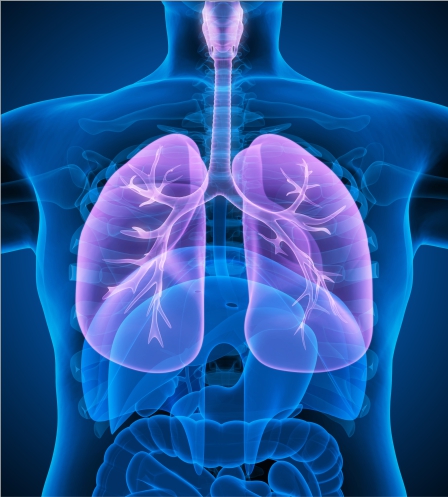PULMONOLOGY

A breath of fresh air in lung care
Breathing is vital to life. If you find yourself struggling to breathe due to a disease or disorder of the lungs, it’s time to see our pulmonologist.
At Bhrungi, our team of top pulmonologists deals with the causes, diagnosis, prevention and treatment of diseases and disorders of the respiratory system, including the lungs, upper airways, thoracic cavity, and chest wall. Our pulmonologists have expertise in structural, inflammatory, infectious, and neoplastic disorders of the lung parenchyma, pleura and airways, and detection and prevention of occupational and environmental causes of lung disease.
When to consult our lung specialists
While not every cough should send you running to fix up an appointment with a pulmonologist, a severe one that continues over three weeks is cause for concern and needs the attention of our lung doctors. Generally, it is advisable to seek the help of a pulmonologist when you experience symptoms such as chest pain or tightness; dizziness or fainting; breathing difficulty, especially during physical activity; feeling of tiredness or fatigue; wheezing sound when breathing; recurring bouts of bronchitis or colds; asthma that is not well-managed, or has unidentified triggers.
Expertise to provide comprehensive lung care
At Bhrungi, we believe that accurate diagnosis is the first step towards effective treatment. Our pulmonologist may recommend procedures and imaging tests, based on the symptoms, which may include spirometry, chest X-rays, CT scans, bronchoscopy, chest ultrasound and sleep studies.
Our pulmonologists have the necessary skills and experience to provide the best treatment for respiratory problems. As part of our practice to offer holistic care to patients, the pulmonary medicine team works seamlessly with specialists from other fields such as thoracic surgery; critical care; sleep medicine; lung cancer; radiology; pathology; ENT; allergy and immunology; neurology; lung transplant; or others as required. Only after such inter-department consultation is the treatment pathway developed which is tailored to the patient’s specific needs and condition.
It is a test to assess the functioning of the lungs by measuring how much air is inhaled, and how much and how quickly it is exhaled. It is usually used to diagnose asthma, chronic obstructive pulmonary disease (COPD) and other conditions that affect breathing.
A quick test to measure air flowing out of the lungs, it is useful for people with asthma as it helps manage the condition better or check how well a treatment plan is working. PFM is also used to assess other lung problems like emphysema and chronic bronchitis.
Bronchoscopy
A diagnosis and treatment procedure, it helps to look directly at the lungs and air passages using a thin, lighted tube (bronchoscope) inserted through the nose or mouth. It may be used to control bleeding, remove foreign objects stuck in the airway, take tissue samples, do procedures such as stents etc.
Chest Ultrasound
A non-invasive diagnostic exam that produces images for evaluating the organs and structures within the chest such as the lungs and to assess the presence of excess fluid in the space between the lungs and the interior wall of the chest (pleural space).
Lung Scan
An imaging test usually done to diagnose and find blood clots or other small masses called emboli in the lungs, it may also be used to monitor the progress of treatment.
Minimal Access Surgery
This surgery involves the use of laparoscopy, with benefits including less scarring, less pain and shorter hospital stays.
Pulmonary Angiogram
An angiogram is an X-ray image of the blood vessels. A pulmonary angiogram is An angiogram of the blood vessels that send blood to and from the lungs, it is usually done to detect and locate a pulmonary embolism or blood clot.
Spirometry
It is a test to assess the functioning of the lungs by measuring how much air is inhaled, and how much and how quickly it is exhaled. It is usually used to diagnose asthma, chronic obstructive pulmonary disease (COPD) and other conditions that affect breathing.
Peak Flow Measurement (PFM)
A quick test to measure air flowing out of the lungs, it is useful for people with asthma as it helps manage the condition better or check how well a treatment plan is working. PFM is also used to assess other lung problems like emphysema and chronic bronchitis.
Transbronchial Biopsy (TBLB)
It involves inserting a flexible telescope (bronchoscope) through the nose to collect pieces of lung tissue, which are then analysed to determine the cause of breathing difficulties or lung problem. Whenever possible, TBLBs are preferred over open biopsies so that patients benefit from the minimal risk, quick recovery and no scar techniques.
Thoracoscopy
A minimally invasive surgical technique to diagnose and treat problems in the chest, it involves inserting a tiny camera (thoracoscope) and surgical instruments into the chest through small incisions. The thoracoscope sends images to a video monitor to guide the surgeon in performing procedures such as removal of excess fluid or air from around the lungs, biopsy to diagnose lung cancer, surgery to treat lung cancer and surgery for lung volume reduction.
Chest X-ray
It produces images of the heart, lungs, blood vessels, airways, and the bones of the chest and spine. It can reveal fluid in or around the lungs or air surrounding a lung, detect cancer and show chronic lung conditions, such as emphysema or cystic fibrosis.
Lung Biopsy
This is a procedure in which samples of lung tissue are removed to check for the presence of lung disease or cancer. The various types of biopsy procedures include Needle Biopsy, Transbronchial Biopsy, Thoracoscopic Biopsy and Open Biopsy.
Pulmonary Function Tests (PFTs)
These are non-invasive tests to check the functioning of the lungs by measuring lung volume, capacity, rates of flow, and gas exchange. PFTs also help to assess progress of treatment for asthma, emphysema, and other chronic lung problems.
Pleural Fluid Aspiration
This simple procedure involves passing a small needle through the chest wall to remove fluid or air from the space between the lung and the chest wall (pleural space).
Transbronchial Needle Aspiration (TBNA)
A minimally invasive procedure to diagnose disease of the mediastinum and lungs, it helps obtain tissue from lesions that are in close proximity to the endobronchial tree. The aspirated material is sent for cytological, histological, or bacteriological analysis.
Sleep Study
Also known as polysomnography, it is a non-invasive, comprehensive test to diagnose sleep disorders. During the study, as the patient sleeps, brain waves, oxygen level in the blood, heart rate and breathing, as well as eye and leg movements are recorded to identify possible disruptions in the sleep pattern.
Unmatched expertise to treat lung problems
Aspiring to be the leading hospital for lung and breathing disorders in Hyderabad, Bhrungi’s team of experienced pulmonologists are skilled in the use of the latest techniques and technologies to treat a variety of conditions.
- Allergic Bronchopulmonary Aspergillosis
- Asthma
- Bronchiectasis
- Bronchiolitis
- Bronchitis
- Bronchopulmonary Dysplasia (BPD)
- Chronic Obstructive Pulmonary Disease
- Coccidioidomycosis
- Cystic Fibrosis
- Infant Respiratory Distress Syndrome
- Interstitial Lung Disease
- Pleurisy
- Pneumoconiosis
- Pneumonia
- Pneumothorax
- Pneumothorax
- Pulmonary Arterial Hypertension
- Pulmonary Embolism
- Pulmonary Fibrosis
- Pulmonary Hypertension
- Pulmonary Sequestration
- Sarcoidosis
- Sleep Apnea
- Tuberculosis
MEET OUR TEAM
Dr. T. Venkat Reddy
MBBS, MD
Consultant – Interventional Pulmonology
On Appointment








